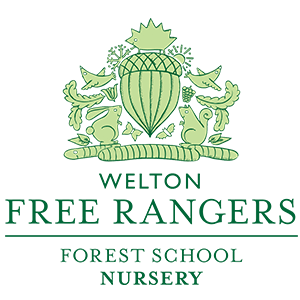When observing play/learning situations on Forest School, I have to weigh up a lot of decisions in my head. Is their play safe? Should I step in here? How could I extend their learning? Which direction is that child taking their play? I quickly pen unreadable notes on the quality and nature of the children's play, their behaviour and movement and the direction the a particular session has taken to give me child based inspiration on what to plan for the following weeks. I use "plan" in the loosest sense of the word as the children very often take it in their own direction. And rightly so. I am only there to set a basis for their play and then I observe and interact where absolutely necessary. That's what makes Forest School so rewarding and beneficial. It's a simple recipe for success: Take one rounded group of willing little minds, a wholesome challenging green environment, add a sprinkling of open-ended child led resources and lovingly serve with a health dollop of risk and challenge. Delicious no?
Often reported in the media is the sedentary lifestyle of our younger generation. Tech savvy they might be, but all that screen time is causing children to loose contact, interest and more worryingly, respect for the outdoors. At Free Rangers your children are far from sedentary, and on Forest School especially we seek to challenge your children and reconnect them to the special world out of the window and beyond the screen. There is also a trend for the advocation of 'risky play' or 'challenging play' in education, but for me, it should just be play. A child's play should inherently have some risk or challenge involved as well as being as free and independent as possible to maximise the learning potential - it should come as standard. This is something we strive for at Free Rangers, and we strongly believe this will give your children the best start in life.
over recent weeks the Den children have been establishing their skills on the Timber Trail and exploring the lower half the paddock. The children could freely access the whole area, testing their balance and co-ordination on the wooden assault course, exploring the long grasses playing hide and seek or scouring the undergrowth in search of bugs. To further embellish their play, we gave the children rocks/bricks, crates and rope to use, and watched closely to see how their play developed. Ropes were tied, threaded and lassoed around various objects, crates piled up to that space that's just of reach, a pulley was set up in the trees to enable the heaving of heavy objects into the canopy, bricks were stacked to make homes for bugs, the mud hill was conquered by merry mountaineers, who then slid back down the other side like penguins into the sea. We also set up a "slackline" (a sort of tightrope with ratchet straps - which when I think about: it's an awful product name...) through the trees to really test the children's ability to navigate at height.
Last year I redesigned the old Assault Course (with the children's heavy involvement - blog post to follow soon!) as it just wasn't enough of a challenge anymore. The new Timber Trail for some represents a serious challenge to complete its entirety unaided. For other more competent users, the Timber Trail still represents a challenge but one where they can begin to experiment with their movement and control as they traverse the different wooden elements. They stretch, they swing, they climb, they crawl, they slide, they jump, they shuffle, and hop. It provides the opportunity for such varied physical interaction, it's no wonder its gets a lot of traffic. It has been rewarding to see how our older children are also helping the younger ones as they attempt to get across. They offer hands to steady their balance, or strength to help lift that heavy weight or a crate to bridge that gap that proving to be just that little too tricky.
The Timber Trail is not without risk. Even the more competent users need the occasional reminder to think about how they are moving or playing. When I watch a child on Forest School and witness play that's either unsafe or dangerous to themselves or to others, I try not to jump straight in and change whatever I have deemed (from my adult perspective) as being unsafe. As I mentioned earlier, I make a lot of observations and decisions in my head on how the children are playing, and it's easy to fall into the trap of just saying "Be careful!" But what does that mean to a child? For me, it's a negative reinforcement of the children challenging themselves and developing play strategies. I want to empower children to face risks and overcome problems independently. So instead I will state the hazard/risk to the child so they can make a judgement for themselves on where/how they need to make any changes. This allows for the development of identifying and understanding potential risks around them so they can be managed without adult intervention in the future. But in order for this to happen they have to face those risks in the first place. This is why the basis of our pedagogical ethos is based around Forest School as it offers an arena for this to develop. And it's a big reason as to why I enjoy my job so much.
Many thanks for reading as always. Please feel free to share and comment!
Red Fox 🐾










































